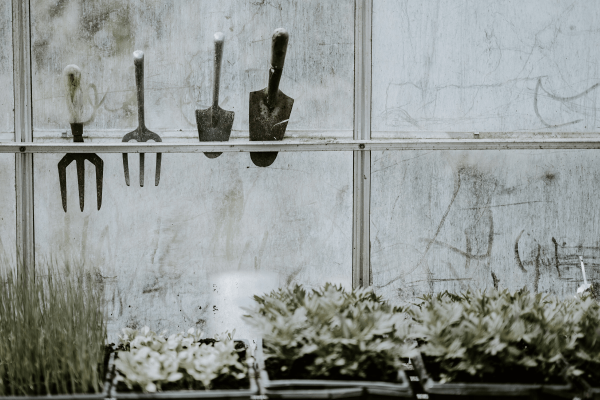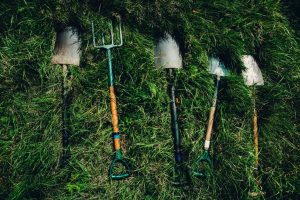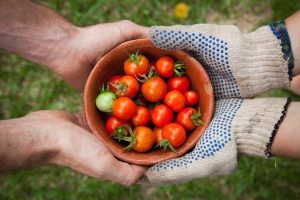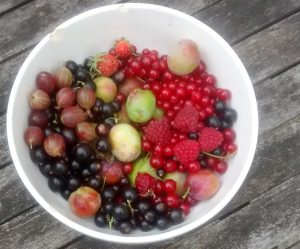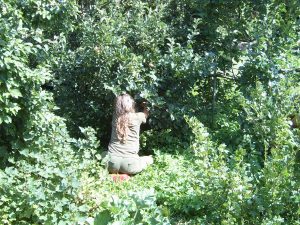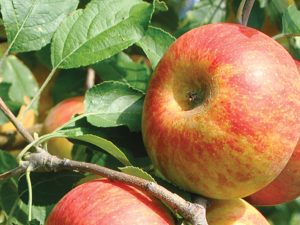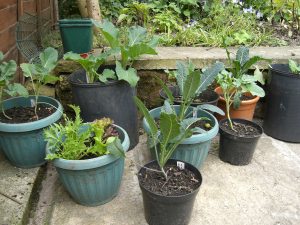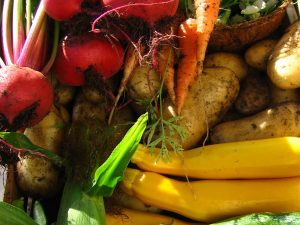With the UK lockdown ongoing, many of us will be dreaming of days when we can once again be out and about and active in our local community. With this in mind, we share a series from Ethical.net exploring how to start a community garden.
This type of garden is wonderful for a community. They can provide food, bring people together, and create a beautiful, productive space to be enjoyed by all. They can be a space of sharing and healing, and can be used by locals in a wide range of ways.
In this article, we’ll look at how to start a community garden. Though aimed at UK readers plenty of these tips will apply no matter where.
Before starting
While starting a community garden can be a very rewarding experience, it entails a lot of work. If you simply want somewhere to grow your own food, or to work with your hands in the soil, there are other possible options, so it is worth asking:
Is there already a community garden near you?
Though community gardens are often welcoming and inclusive, there may be one hidden away nearby, or in an area you don’t usually visit.
Could you share an existing garden?
Even if there is no community garden in your area, if you are unsure about plunging headfirst into creating one yourself, gardening in someone else’s private space may be an alternative option.
You might be able to share someone else’s garden; start by approaching friends or neighbours who could be willing to let you cultivate a section of their garden – perhaps in return for a share of the produce.
Otherwise, you may be able to contact homeowners online who are willing to share their garden space. A good starting point is Lend and Tend.
Could you get an allotment?
Alternatively, your local authority may offer allotment plots; in some areas, there are plenty going begging, while in others there are long, long waiting lists. If you haven’t already done so, it is well worth looking into the situation in your area. Find out more about allotments from the National Allotment Society.
Could you join a Community Supported Agriculture (CSA) scheme?
If you want to support local growers, but not necessarily get your hands dirty yourself, consider a Community Supported Agriculture scheme – another potential way to get your hands on locally and sustainably-grown food.
Why start a community garden?
Having a place to grow your own food, giving access to freshly-grown produce, is not the only reason – so even if you have an existing growing area, or are involved in local food production, it could still be incredibly worthwhile.
Before getting started, it is vital to consider your reasons for doing so in the first place. There is a wide range of reasons why community gardens are a great idea:
For food and security:
- Community gardens make a community more food-secure. Food security is vital for the long-term survival of any community – yet, all too often, communities become ‘food deserts’, with many people going without enough food. Community gardens ensure access to good-quality, local, and organic food.
- Community gardens put power back into the hands of local people, reducing reliance on regional authorities or government to provide for their needs. Communities are increasingly recognising that co-operative efforts can improve areas’ wellbeing more quickly than by relying on authorities to do so.
For the planet:
- Growing food locally is also highly positive because it reduces food miles, lowering the carbon cost of food production. It also helps tackle global warming because intensive small-scale sites can be ‘farmed’ or gardened more sustainably, with less recourse to fossil fuel-powered vehicles or machinery.
- Community gardens allow local people to combat global warming by ‘re-greening’ cities: planting trees and crops can turn unpromising corners or brownfield sites into thriving carbon sinks.
- Community growing areas can improve local biodiversity and protect local wildlife. The more biodiverse an ecosystem, the more resilient it will be.
For individuals:
- A community garden can provide other yields as well as food, such as fuel, crafting materials, and natural medicine.
- Intangible yields like fun, joyfulness, and connections with others can enrich the lives of individuals and the community in a range of often unexpected ways.
- Gardens can be great for the health of a community; they not only provide physical nourishment and a source of healthy food, but also nourish the mind and ‘soul’, though connection with and enjoyment of nature. A garden is a healing place – for horticultural or garden therapy, healing, or palliative care.
Your reasons for starting a community garden will often dictate the appropriate process. Firstly, this will determine the type of garden best suited to your community and its particular needs. You may have a focus on one or more of the above, or think in terms of a range of the above reasons.

Photo: Benjamin Combs on Unsplash
Different types of community growing
Whatever your reasons, one of the first things to consider is what type of community growing scheme to create. Here are the main options:
Traditional community gardens and allotments
Traditional community gardens or allotment sites generally involve growing mostly annual crops. Crops can be grown in the ground, raised beds, or even in containers, depending on the site. However, a typical focus on food production doesn’t preclude traditional ornamental planting or flower gardens.
Whereas community gardens usually involve some element of communal growing – often with larger planting areas tended by more than one family, individual, or group – allotment sites are generally divided into specific, private plots.
Crossover between these approaches mean that many community gardens may feature some combination of the two. There are no hard and fast rules, and many community gardens evolve over time according to the needs and wishes of their members.
Community farms
Usually larger sites than the above, with a definite focus on growing food for the community, these farms may have large areas for fruit and vegetables, and sometimes even arable crops. They also often extend to keeping livestock such as chickens and ducks, goats, and even larger farm animals.
Community orchards
An area planted with a range of fruit and/or nut trees, these orchards are often not as intensively managed as community gardens or farms, and may require only minimal intervention once the trees have been planted and the system set up
Forest gardens
Resembling wild woodland more than a managed orchard, a forest garden is another low-maintenance way to provide food and other resources for a community. Unlike a community orchard, which may only have trees, a forest garden features rich and dense layers of planting. Though mimicking natural woodland or forest, traditional woodland species are replaced with plants that are edible or otherwise useful to humans.
Determine your motives and find your community
The right option will of course depend on your primary motives for creating a community growing area. But another major factor is the community itself; it is important to begin your project with a clear idea of who this comprises.
These gardens can serve a wide range of communities. You might define your community geographically, but other parameters may be preferable.
For example, you might create a community of like-minded people from your town or city. You might set up a community garden at work, to serve you and your colleagues, to serve a school and its families, or a youth club or other social enterprise. Community gardening can bring people together, or cement existing ties.
A successful community garden is always one that keeps its members in mind at all times. What works for one community may not work for another – so people should come first.
Once you have found your community garden group, it is time to begin seriously looking into the practicalities of getting your start-up off the ground. It is best to begin with a small, dedicated group who can work together to give the idea practical form. Make sure you agree on a mission and vision, and all share a clear idea of what your garden project can become.
Once you’ve got a steering group and a clear idea, you can engage the wider community to get more people on board.
Part 2 coming soon, tackling how to find your site and more. Find the original post by Elizabeth Waddington here on the Ethical.net blog. Main image by by dylan nolte on Unsplash.
 About the author
About the author
Ethical.net is a collaborative platform for discovering and sharing ethical alternatives, whether purchasing from a social enterprise, thrift shopping, or learning how to fix your old phone instead of buying a new one. They aim to make ethical the new normal.

